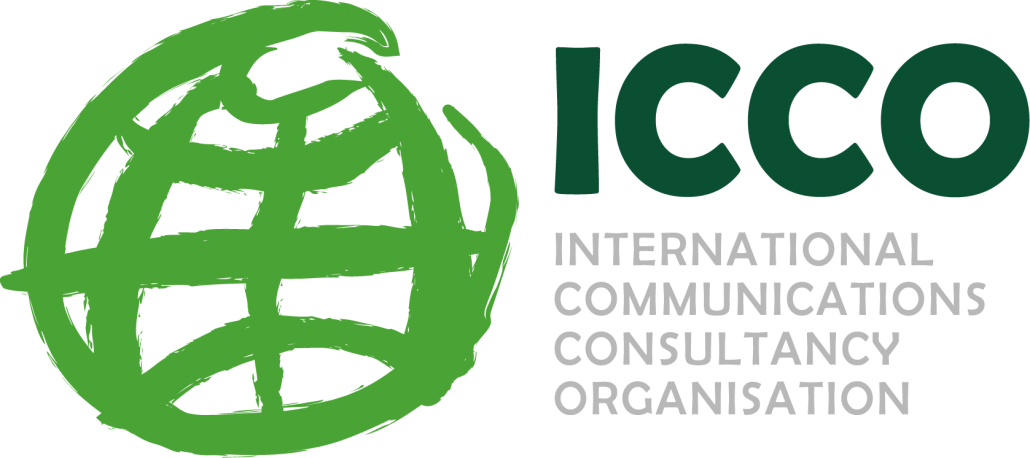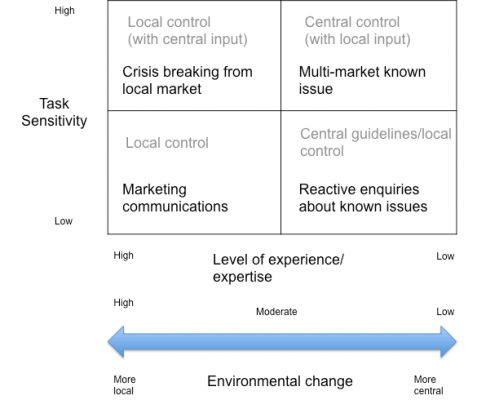New report considers structures of international PR functions
A new research report has been published with the support of ICCO and the PRCA, which sets out to define the structures of international PR functions.
The research report ‘The globalisation of public relations – How companies are managing communications across continents’, was written by Steven Shepperson-Smith for his Masters of Business Administration Degree at Cass Business School.
Its aim is to develop a systematic way to design a global PR function, and to understand how agencies might best provide it with support.
The report builds upon the work that the PRCA globalisation subcommittee carried out as part of the Future of the PR Industry project.
The findings address the ongoing debate about whether the management of PR should be more centralised (with more resources in a global headquarters), decentralised (with resources focused in operating companies or regional/divisional groups), or indeed made modular (by involving agencies or specialist consultants).
Steven Shepperson-Smith said: “It is increasingly difficult to co-ordinate communications work across multinational organisations.There is no single best-fit organisational design to resolve that. My model is designed to help managers focus on the main factors which they should be considering, and then design a structure that best suits their organisation.”
The research found that there are benefits to a flexible function design that will allow centralisation and decentralisation of ‘communication networks’ for different tasks. However, the decision about how to structure PR teams will be contingent on the operating environment for an organisation in different markets, the experience and expertise of staff in those locations and the sensitivity of different tasks needing to be performed (often defined by what is on the radar of senior management).
The research sets out a series of different models which multinational organisations use for their PR function:
1. Centralised control
2. Centralised, unified
3. Centralised/fragmented
4. Central guidelines, regional control
5. Central guidelines, local control
6. Localised
7. Central guidelines, divisional control, OpCo implementation
8. Divisional control, OpCo implementation
9. OpCo control, central support
10. Central strategy, implementation by language
11. Central strategy, tiered markets
12. Centre of excellence
To explain why organisations might want to have a more centralised or decentralised approach in different situations the report introduces the PR Team Structure Contingency Model (figure 1).
Figure 1: The PR Team Structure Contingency Model including examples of how different structures might be chosen when different types of activities are most regularly required.
PR departments need more cohesion than ever before to deliver better management of messages. The report concludes that everyone working in PR within an organisation should ultimately report to the same person. That person should design the function to provide fit with the organisational strategy. When the organisational strategy changes, so should the design of the PR function.
Having the right organisational design in place will help PR functions to operate more efficiently in a more connected world. There is no one ‘best fit’ organisational design for a global PR function – it is contingent on a number of different factors. However, it is hoped that readers responsible for designing, or working with or within a global PR function, will find it useful to understand and consider what those factors are so as to apply them in their own context.
For more information, click here.
About ICCO
The International Communications Consultancy Organisation (ICCO) is the voice of public relations consultancies around the world. The ICCO membership comprises national trade associations in 30 countries across the globe in Europe, Africa, Asia, the Americas and Australasia. Collectively, these associations represent over 2000 PR firms.
Contact Binta Kristin Hammerich, ICCO Global General Manager
About PRCA
Founded in 1969, the PRCA is the largest PR association in Europe, representing 12,000 people in agencies, in-house communications teams, and individuals. The PRCA promotes all aspects of public relations and internal communications work, helping teams and individuals maximise the value they deliver to clients and organisations.
Contact Matt Cartmell, PRCA Communications Director





